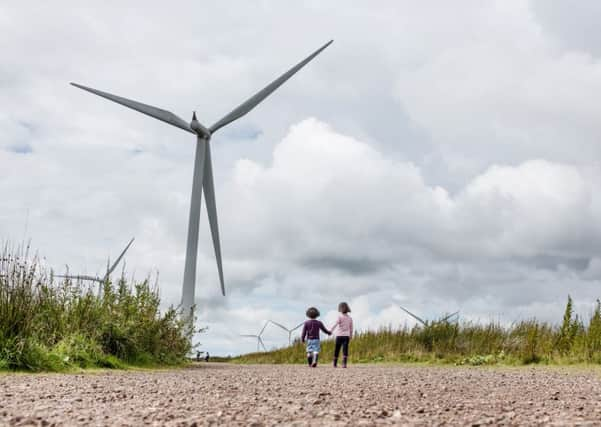Scottish Legal Review: Winds of change pick up


Despite production being down on the previous two years by 1.7 per cent, the government says it reflects confidence returning to the sector.
Clare Munro, partner and head of Energy & Infrastructure at Brodies, says: “It feels like we are over the worst of the downturn, which was actually very long, drawn-out and quite severe.
Advertisement
Hide AdAdvertisement
Hide Ad“We have been working on a lot of developments for clients in mergers and acquisitions, which is good because it means confidence has come back into the sector in terms of assets changing hands.”
Her team has been busy working on Premier Oil’s Tolmount gas project in the North Sea, with production announced in August.
She says: “There has been a move in the sector towards what we call specialist infrastructure owners owning infrastructure in the midstream.
“This deal was innovative in that the infrastructure owner was there at the start, working with the upstream [exploration and production] company to fund the infrastructure from the beginning and that’s never been done before.”
A major gas discovery off the coast of Shetland was also announced in September.
While it is too early for legal work, Munro expects more is to come from it. The renewables sector is slowly picking up pace since the end of the Renewable Obligation Scheme (RO) by the UK government last year.
Corporate power purchase agreements (PPAs) are increasingly being used as routes to market, with many firms advising clients on responding to corporate PPA tenders.
Andrew McFarlane, renewable energy partner at WJM, says: “The mood is a bit more optimistic than perhaps it has been in the last couple of years.
Advertisement
Hide AdAdvertisement
Hide Ad“We are seeing, in the short term, that people are still interested in doing onshore wind [projects], but we are going to see larger ones brought forward and less of them.”
His team, which was involved in one of Scotland’s most ambitious RO projects, the development and sale of Freasdail Wind Farm, in Kintyre, is increasingly working with shared assets as developers can no longer afford to build their own.
He adds: “The Scottish Government continues to make positive noises about onshore wind and renewables in general.
“I think the industry is waiting to see whether they can transform those positive noises into real substantive policy which can benefit projects.”
Last month [16 October] Scottish Power became the UK’s first major energy company to generate all electricity from wind. Keith Patterson, Brodies’ projects partner, says it is an example of current trends.
He says: “In the past you would have utilities with renewables added on and they needed small independent players who were niche operators in the renewables sector.
“We are seeing the emergence now of large-scale renewable companies.”
The trend is international, with Italy’s ERG energy company producing energy only from renewables as of this year.
Advertisement
Hide AdAdvertisement
Hide AdPatricia Hawthorn, energy and resources partner at Shepherd & Wedderburn, says her team is moving into a new development phase as a result of future offshore leasing rounds.
“That’s going to be busy in the forthcoming year. Offshore construction is becoming active for us as we are now engaged in a number of offshore projects in advising on construction issues.
“In the onshore sector we are looking at a lot of secondary market activity and that’s been quite consistent over the year on wind, hydro and solar.
“Recently the team acted on the sale of Green Highland Renewables to SIMEC, the energy arm of GFG Alliance.”
She adds: “My colleagues have stressed to me the importance of innovation in what we do now.
“We can see that across the energy sector, that innovation is now key to getting onshore projects to work financially with the restriction of subsidy regimes.”
This article appeared in the Scottish Legal Review. A digital version can be found here.